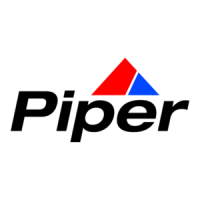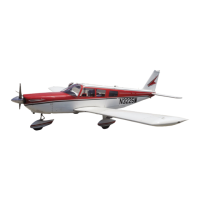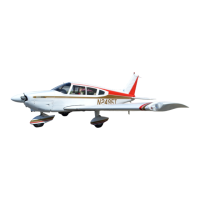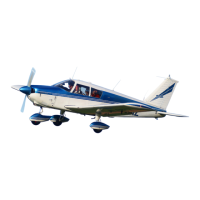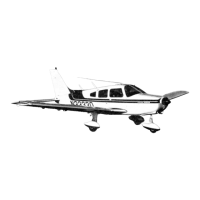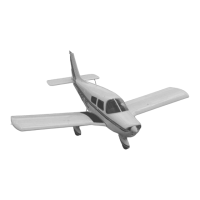ARROW I1
STARTING ENGINE WHEN FLOODED
1. Open the throttle full.
2.
Turn the master switch ON.
3.
Turn the electric fuel pump OFF.
4.
Put mixture control in IDLE CUT-OFF.
5.
Engage the starter by rotating the magneto switch clockwise and pressing in.
When the engine fires, advance the mixture control and retard the throttle.
When the engine is firing evenly, advance the throttle to
800
RPM. If oil pressure is not
indicated within
30
seconds, stop the engine and determine the trouble. In cold weather it will
take a few seconds longer to get an oil pressure indication. If the engine has failed to start, refer
to the "Engine Troubles and Their Remedies" section of the Lycoming Operating Handbook.
Starter manufacturers recommend that cranking periods be limited to
30
seconds with a
two minute rest between cranking periods. Longer cranking periods will shorten the life of the
starter.
STARTING
WITH EXTERNAL POWER*
An optional feature known as Piper External Power (PEP) allows the operator to use
an external battery to crank the engine without having to gain access to the aircraft
battery.
The procedure is
as
follows:
I.
Turn aircraft MASTER SWITCH to OFF.
2.
Connect RED lead of PEP kit jumper cable to POSITIVE
(+)
terminal of
external
12
volt battery and BLACK lead to NEGATIVE
(-)
terminal.
3.
Insert plug of jumper cable into socket located on aircraft fuselage.
4.
Turn aircraft MASTER SWITCH to ON and proceed with NORMAL engine
starting technique.
5.
After engine has been started, turn MASTER SWITCH to OFF and remove
jumper cable plug from aircraft.
6.
Turn aircraft MASTER SWITCH to ON and check alternator ammeter for
indication of output. DO NOT ATTEMPT FLIGHT IF THERE IS NO
INDICATION OF ALTERNATOR OUTPUT.
WARM-UP AND GROUND CHECK
Warm-up the engine at
1400
to
1500
RPM for not more than two minutes in warm
weather, four minutes in cold weather. Avoid prolonged idling
at low RPM as this practice may
result in fouled spark plugs. If necessary to hold before take-off, it is recommended that engine
be operated at
1400- 1500
RPM.
The magnetos should be checked at
2000
RPM with the propeller set at increase RPM.
Drop off on either magneto should not exceed
175
RPM and the differential should be not
more than
50
RPM. Prolonged operation on one magneto should be avoided.
*Optional Equipment
OPERATING INSTRUCTIONS
ISSUED: JULY 13,1973
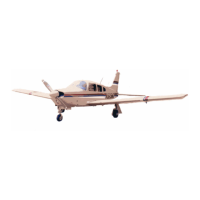
